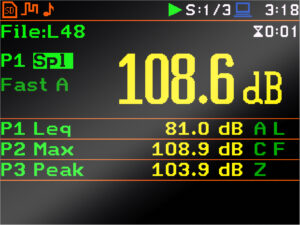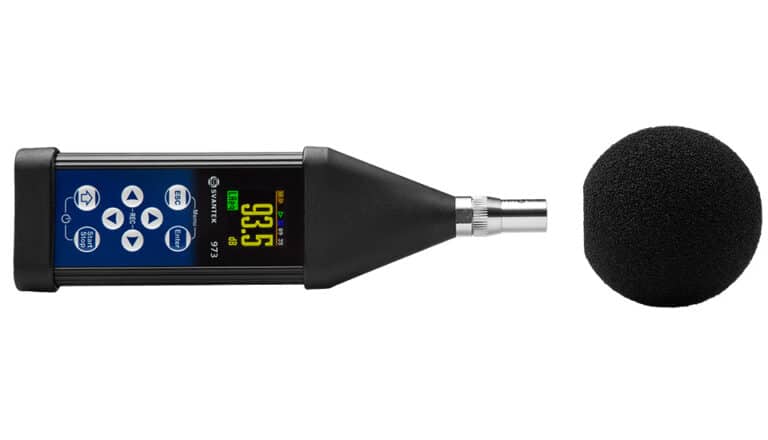There are as many different ways to measure decibels as there are decibel indicators. The most popular indicators are SPL, LEQ, and PEAK, depending on the noise measurements. However, this is just the beginning.
Decibel is a relative unit of measurement and each decibel is expressed as a ratio relative to a reference sound pressure, power, or intensity, or whatever quantity is being measured. For this reason, whenever we talk about decibels we use the word “level” meaning that the measurement is a ratio relative to a reference level.
Noise indicators are expressed in decibels as a consequence of a very wide range of sound pressures encountered. The use of decibels logarithmic scale compresses the range of numbers required to describe this wide range of sound pressures.
Sound pressure level (SPL), is expressed in decibels to a reference level of 0.00002 Pascals (20 uPa). The reference value is the smallest sound that the human ear can detect.
Sound pressure levels can be expressed in decibels A, or C depending on the frequency weighting filter applied by a sound level meter. Sound level meters shall have A-weighting as a minimum and class 1 sound level meters should be able to measure with C-weighting too.
Time weighting is an exponential function of time, specified as the time constant F (Fast) or S (Slow). The use of time constants reduces rapid variation of sound levels. For example, using S will delay the indication of noise levels on the sound level meter display. The indicators of time-weighted sound levels are symbols LAF (L- level, A-weighing, F-Fast), LAS, LCS, and LCF.
Because noise varies over time, average values are used in noise measurements. The LEQ is the most common since it is directly related to the energy content of the noise. It’s worth noting that BS EN 61672-1 specifies that the LEQ isn’t based on time-weighting (F or S).
The LEQ is indicated as time-averaged and, as a result, it is based on T time increments. It is generally calculated with A-weighting, which approximates the human ear’s response to the sound.

The peak value is the maximum value of an amplitude that the signal reaches with the period T.
The C-weighting is used to measure the PEAK since it better reflects low-frequency noise than A-weighting. It’s critical to note that while the PEAK is not time-averaged like the LEQ, it represents the highest noise sample.
The BS EN 61672 Class 2 sound level meter should have at least frequency weighting A and Fast time-weighted sound level LAF, as well as time-averaged sound level LAeq. The requirement for class 1 sound level meters is that they additionally measure C-weighted LCpeak at a minimum.

Class 2 sound level meters, such as the SV 973, and class 1 sound level meters, such as the SV 971A, far exceed BS EN 61672’s minimal standards. Both devices can store LEQ, PEAK, MAX, and MIN with A,C, and Z weightings simultaneously so you won’t have to worry about it.
80 dB, 85 dB, and 87 dB are the limits for daily exposure levels set by the Control of Noise at Work Regulations. Depending on the threshold, different actions must be taken to avoid hearing damage of workers.